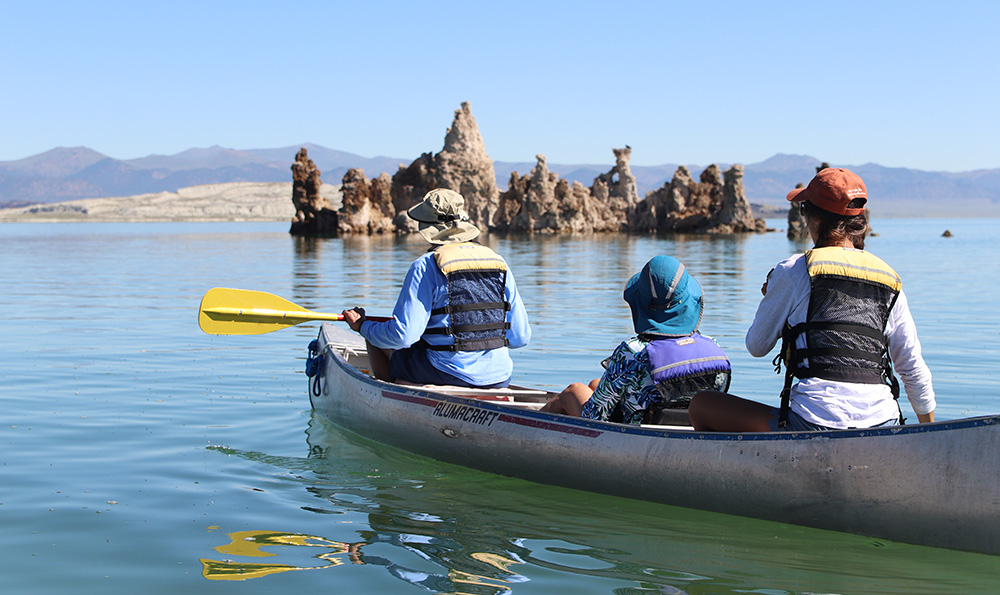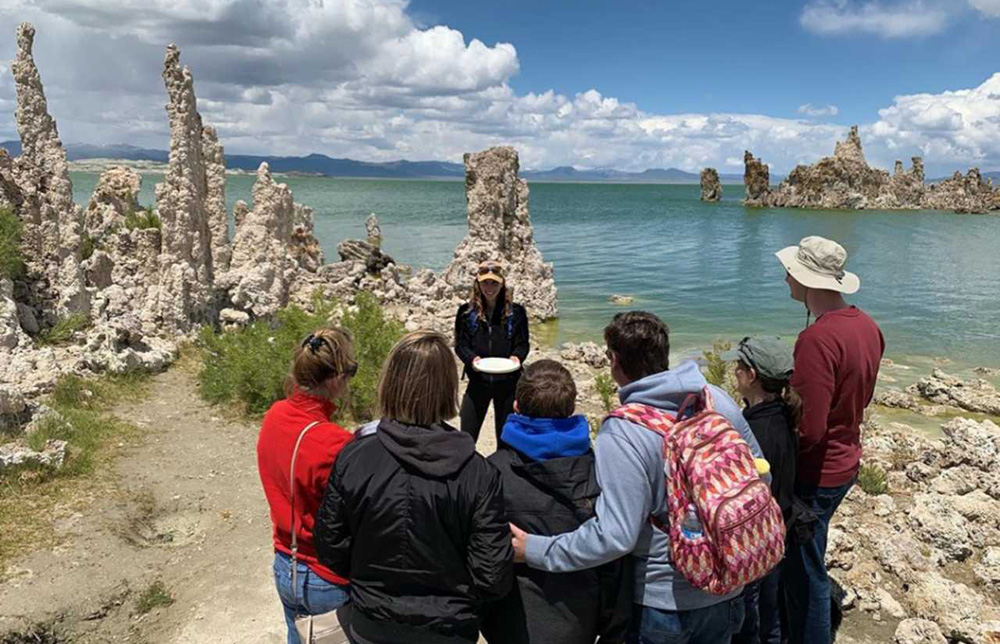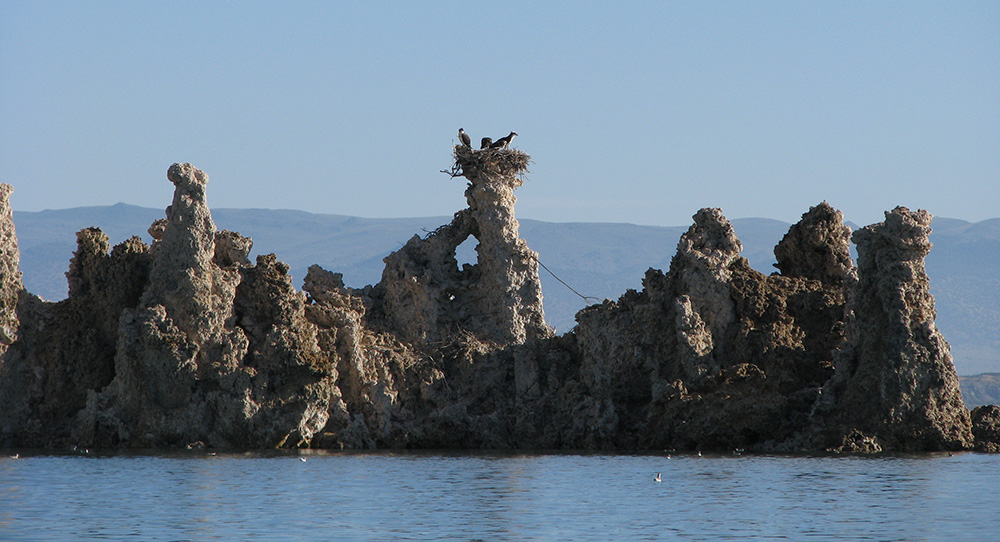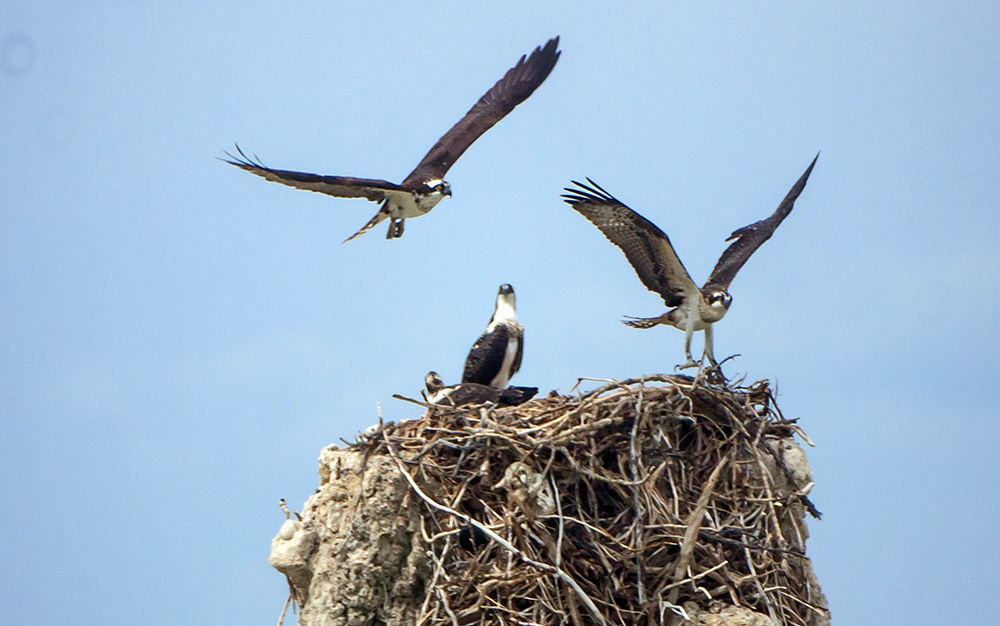
This post was written by Alison Kaplan, 2018 & 2019 Canoe Coordinator.
One of the perks of working as the Canoe Coordinator for the Mono Lake Committee is that I get to closely observe the nesting osprey at Mono Lake. Just like me, the osprey usually arrive at Mono Lake in late spring. Canoe tours don’t start until mid-June each summer, so for the first month I only observed the birds from the shore at South Tufa.

Once canoe tours start, though, I have the unique opportunity to see these birds from the water. There are approximately 16 pairs of nesting osprey at Mono Lake, all of which nest on the tufa islands, and humans must stay at least 250 yards away from the nests at all times. The only exception to this rule is at South Tufa, where one of the pairs is nesting on a tufa island known as Pirate Ship Tufa, which is less than 250 yards from the shore. The birds in this nest are accustomed to seeing visitors at a slightly closer distance since they are so close to South Tufa, and as a result they aren’t bothered by visitors observing them respectfully from the shore or from canoes that hug the shore as we pass by.

Surrounded by Mono Lake’s water, the birds are completely protected from ground predators since most mammals don’t like Mono Lake’s harsh water. There is one mammal, however, that braves the alkaline and salty soup on a daily basis. While the osprey nests are protected by law, it’s not uncommon for the occasional swimmer or boater to enter Mono Lake without reading up on these raptors—and the result can be deadly for the sensitive chicks, especially this time of year.
The young usually fledge at seven to eight weeks of age, and the consequences are high at Mono Lake. Ospreys’ plumage is thick and oily to prevent their feathers from becoming waterlogged, but Mono Lake’s harsh water can dissolve the oil on their feathers. That means that if a young osprey falls into Mono Lake, its feathers will become waterlogged and without rescue it would likely drown. If a person approaches an osprey nest before the young have fledged, it could cause the chicks to try to fly away before they’re ready, which is why it’s so important that swimmers and boaters read up on the locations of the nests and make sure to keep a safe distance away.

The osprey chicks at Pirate Ship Tufa are about nine weeks old now, and they just took flight for the first time last week. This means our canoe tours are extra exciting right now, as we get to watch this year’s hatchlings testing their wings as we paddle past. The osprey chicks and their parents will depart Mono Lake in the coming weeks, but you can join us this Saturday and Sunday to see the happy family from the comfort of a canoe.

This weekend is the last opportunity to join us for a canoe tour. Our naturalist-led canoe tours run at 8:00, 9:30, and 11:00am on Saturdays and Sundays. Tickets cost $35 for adults and $20 for kids 12 and under. Book your seat online, give us a call at (760) 647-6595, or send us an email with any questions.
